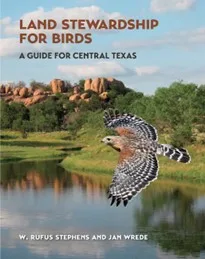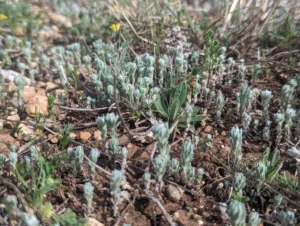Chapter Meetings are Held at the Urban Ecology Center at Phil Hardberger Park and Via Zoom
Meeting Time
Log in at 6:45 if attending via Zoom
7:00 pm – Meeting and program
Our chapter meets on the 4th Tuesday of every month in The Gathering Hall at The Urban Ecology Center at Phil Hardberger Park and via Zoom except August, November, and December. The meetings are free and open to members and the general public. To get information by email on how to register in advance for each monthly meeting, please subscribe to the NPSOT Mailing list.
Chapter Meeting Presentations

Northside ISD’s Restoration Endeavors Using Native Plants
October 2024 Presentation by Amalia Sollars, Isaac Esquivel, and David Oberg. Northside ISD’s Restoration Endeavors Using Native Plants. Join us for an insightful exploration of Northside Independent School District’s innovative

The Monarch Butterfly Migration; Its Rise and Fall
September 2024 Presentation by Monica Maeckle. The Monarch Butterfly Migration; Its Rise and Fall. The Monarch Butterfly Migration Its Rise and Fall – a newly published book by Chapter Member,

Another Stroll in the Yard
July 2024 Presentation by Jake Aalfs. Another Stroll in the Yard. Join Jake Aalfs for another stroll through his San Antonio yard to explore native flora and fauna. Four years

A Fragile Green Thread. And a Trailblazing Way to Protect it.
June 2024 Presentation by Marjesca BrownA Fragile Green Thread. And a Trailblazing Way to Protect it. Texas is losing open space at the alarming rate of 20 football fields per

Land Stewardship for Birds
Book by Rufus Stephens May 2024 Presentation by Rufus StephensLand Stewardship for Birds: A Guide for Central Texas In this revised and re-titled edition of Attracting Birds in the Texas

Identification Tools for Native Plant ID
April 2024 Presentation by Zach RitchieIdentification Tools for Native Plant ID Learning the biodiversity of native species in Texas can be daunting. Gain the tools to identify the native plants

A Discussion of Arboretum San Antonio
March 2024 Presentation by Dr. Kelly Lyons and CEO Thomas CorserA Discussion of Arboretum San Antonio The San Antonio Arboretum on the city’s southeast side is in the planning stages.

A Rare Texas Native-Conservation of the Bracted Twistflower (Streptanthus bracteatus)
February 2024 Presentation by Wendy Leonard. A Rare Texas Native-Conservation of the Bracted Twistflower (Streptanthus bracteatus)

Utilizing Native Grasses in Residential Landscapes
January 2024 Presentation by Cleveland Powell. Utilizing Native Grasses in Residential Landscapes

The Magic of Milkweed
October 2023 Presentation by Lee Marlowe: The Magic of Milkweed

Restore the Earth! Create a Pocket Prairie
September 2023 Presentation by Michelle Gorham of Native American Seed Restore the Earth! Create a Pocket Prairie Converting even a small patch of earth with native prairie species can make

You Are What You Eat – Dining from a Bee’s Perspective
July 2023 Presentation by Mark De KiewietYou Are What You Eat – Dining from a Bee’s Perspective Mr. de Kiewiet will discuss his practice keeping feral bees “back to how


